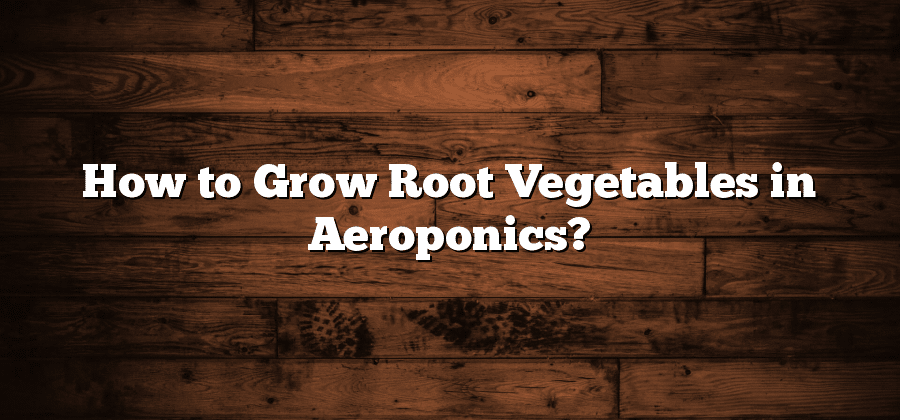Selecting Suitable Root Vegetable Varieties
One crucial aspect of successful root vegetable gardening is selecting suitable varieties that thrive in your specific growing conditions. Different root vegetables have varying requirements for sunlight, soil type, and temperature, so it is important to choose varieties that are well-suited to your region. Conducting thorough research and consulting gardening resources will help you make an informed decision on which root vegetable varieties to grow.
Consider the size and shape of the root vegetables you desire, as well as their storage and cooking qualities. For example, if you prefer smaller, round-shaped root vegetables that are easy to harvest and store, varieties like round carrots and turnips may be the ideal choice. On the other hand, if you are looking for longer, cylindrical root vegetables that can be easily sliced for various culinary uses, elongated beets or parsnips might be more suitable. Taking into account both your personal preferences and the practical aspects of growing and utilizing root vegetables will lead to a successful and rewarding gardening experience.
Preparing the Aeroponic System
One of the key components in successfully growing root vegetables using aeroponics is properly preparing the aeroponic system. This involves ensuring that all necessary components are in place and functioning correctly. First and foremost, it is essential to thoroughly clean and sanitize the system to prevent any potential contamination. This can be done by using a mild disinfectant solution and carefully rinsing all surfaces. Additionally, it is important to check that all nozzles and sprayers are clean and free from any blockages. This will ensure that the nutrient solution is evenly distributed to the plant roots, promoting healthy growth.
Creating a Nutrient Solution
To ensure healthy and vigorous growth of your root vegetables in an aeroponic system, it is essential to create a nutrient solution tailored to their specific needs. The composition of this solution plays a crucial role in providing the essential elements required for optimal growth and development.
When creating a nutrient solution for your root vegetables, it is important to consider the specific nutritional requirements of the chosen varieties. These requirements may vary depending on factors such as the type of root vegetable, its stage of growth, and the overall environmental conditions. By carefully selecting the appropriate mix of nutrients, you can provide your plants with a balanced diet that promotes robust root development and enhances overall plant health.
Planting Root Vegetable Seeds
Once you have selected the suitable root vegetable varieties and prepared the aeroponic system, it is time to move on to the next crucial step: planting the root vegetable seeds. This stage requires careful attention to ensure optimal growth and successful crop production.
To begin, it is important to create evenly spaced holes or furrows in the growing medium where the seeds will be placed. The depth of these holes or furrows should match the recommended planting depth for the specific root vegetable variety being planted. Gently place the seeds into the holes, making sure to cover them with the growing medium to the appropriate depth.
After planting, it is essential to provide adequate moisture to ensure proper germination. This can be achieved by misting the planting area or watering gently with a fine spray. Avoid over-watering, as this can lead to rot or fungal diseases. As the seeds start to germinate and the seedlings emerge, continue to monitor the moisture levels in the growing medium, ensuring it remains consistently moist but not waterlogged.
Properly planting the root vegetable seeds sets the foundation for a successful aeroponic growing system. With careful attention to detail and adherence to recommended planting practices, your root vegetables will be on their way to establishing healthy roots and robust growth. Remember to provide the seeds with the right conditions for germination, and continue to nurture the seedlings as they emerge.
Providing Adequate Lighting for Growth
Root vegetables, like carrots, beets, and radishes, require proper lighting to support their growth and development. Adequate lighting is crucial for these plants, especially when grown indoors or in spaces with limited natural sunlight. Providing the right amount and quality of light will ensure that the root vegetables have optimal conditions for photosynthesis and overall healthy growth.
One of the key considerations when providing lighting for root vegetables is the intensity of the light. These plants require high-intensity light to thrive, comparable to the light levels they would receive outdoors. The light source should emit a sufficient amount of lumens to meet the plants’ needs. Inadequate lighting may lead to weak and elongated stems, lower yields, and reduced nutritional values. To ensure proper lighting, growers can utilize high-intensity discharge (HID) lamps, such as metal halide (MH) or high-pressure sodium (HPS), which emit intense light and are suitable for root vegetable cultivation. Additionally, LED grow lights are gaining popularity due to their energy efficiency, high light output, and the ability to customize light spectra to match plants’ specific requirements.






